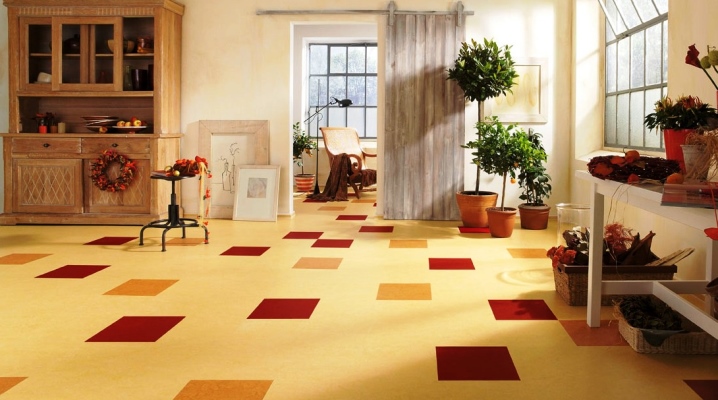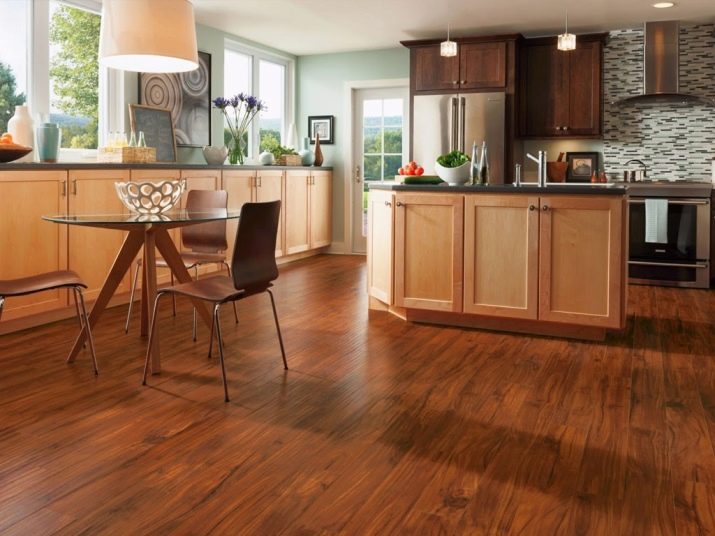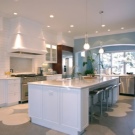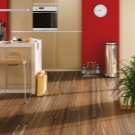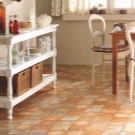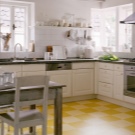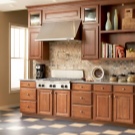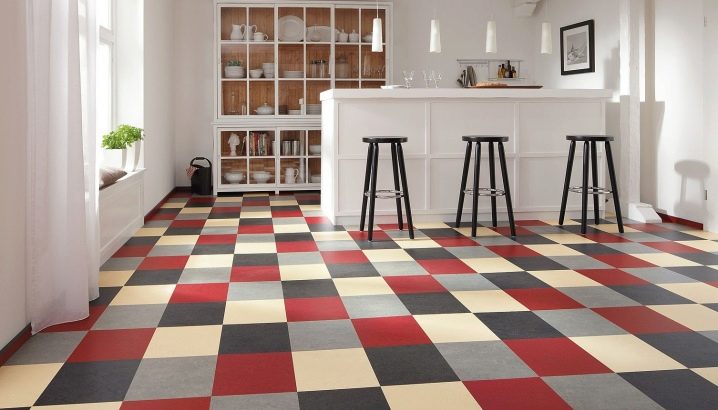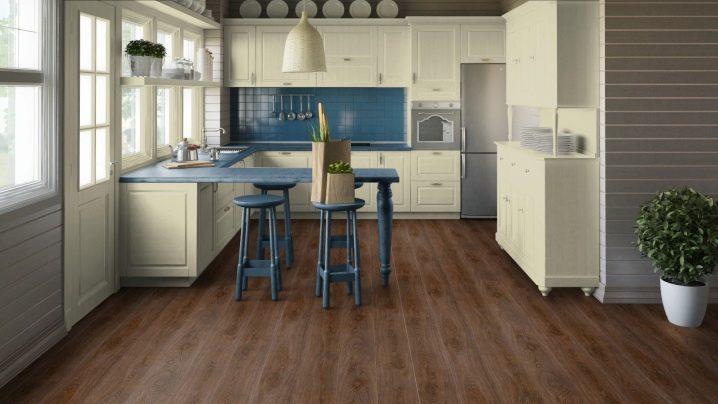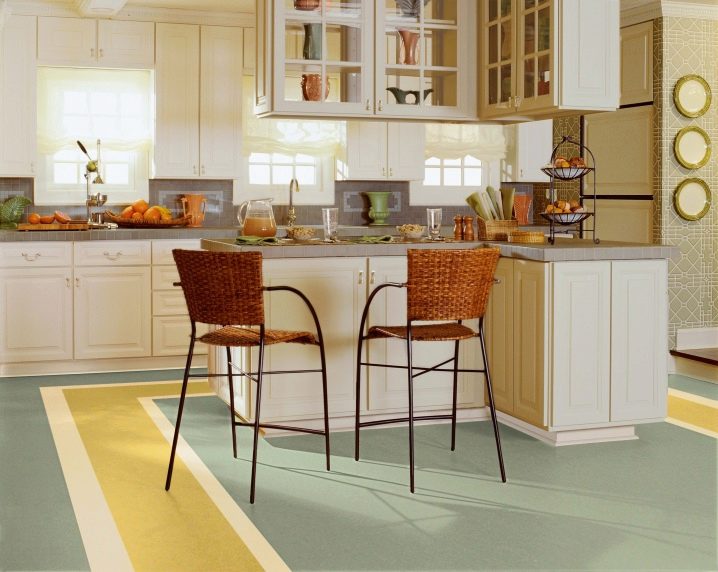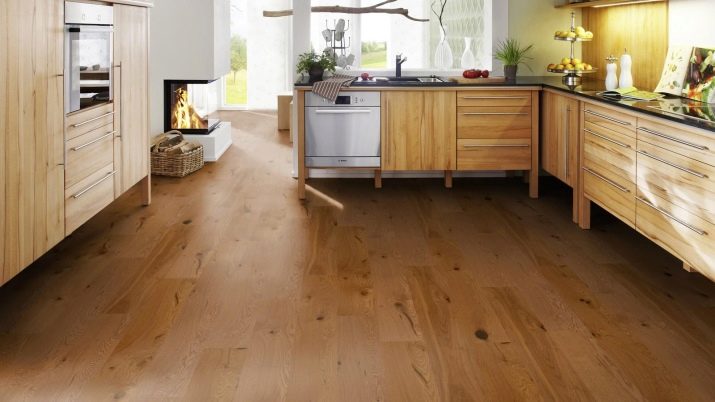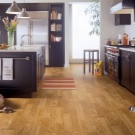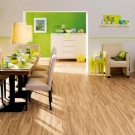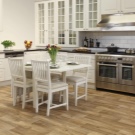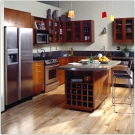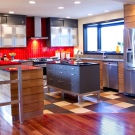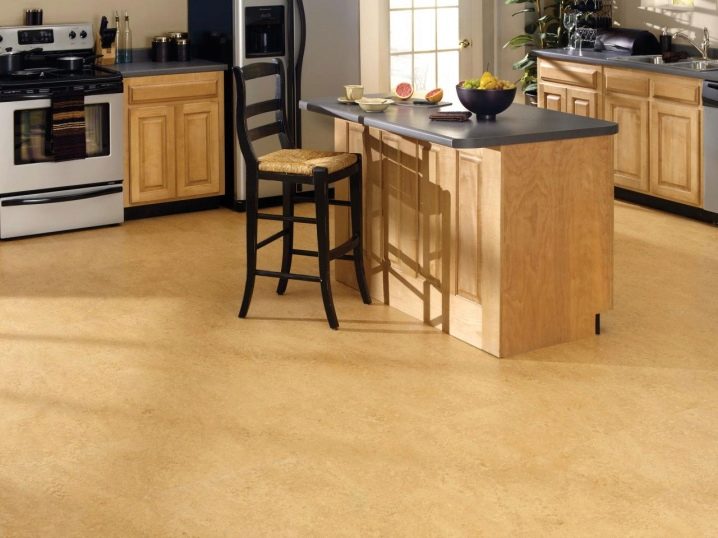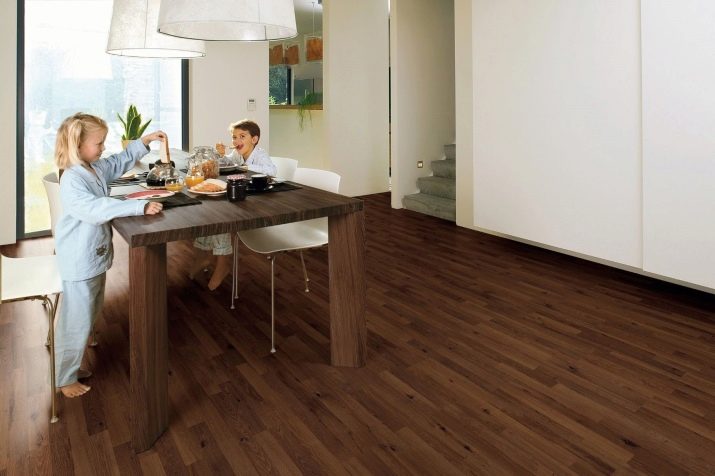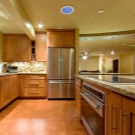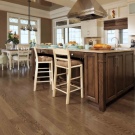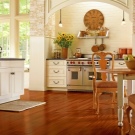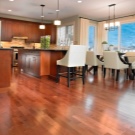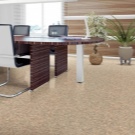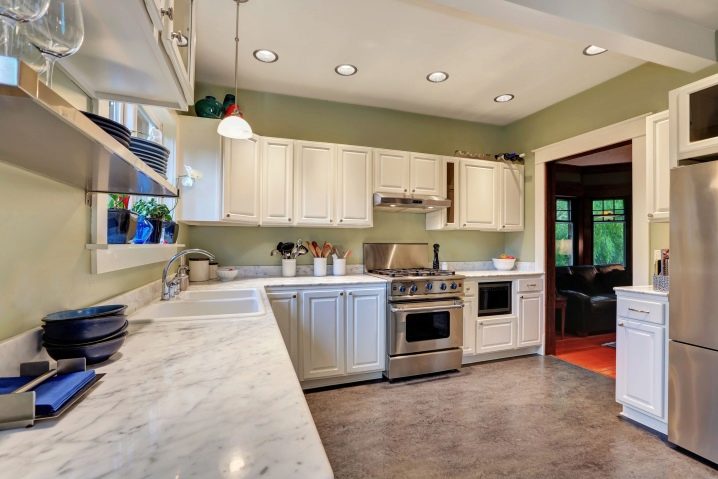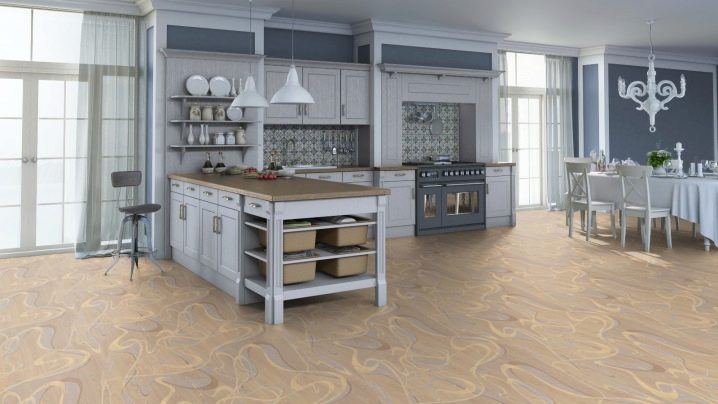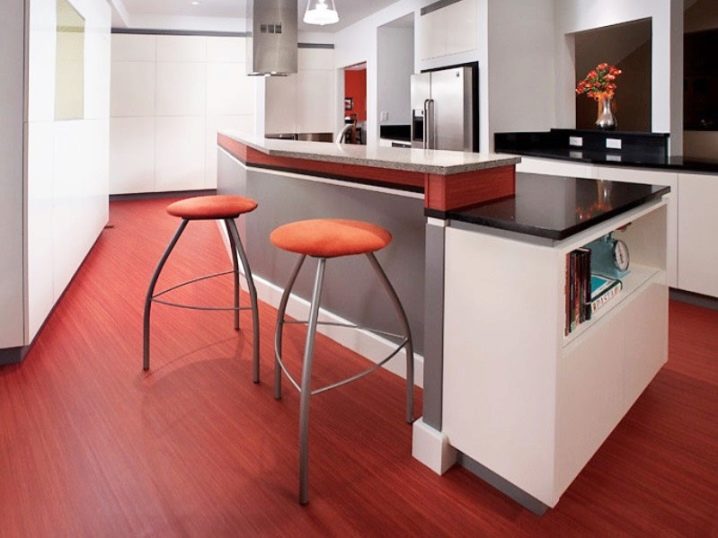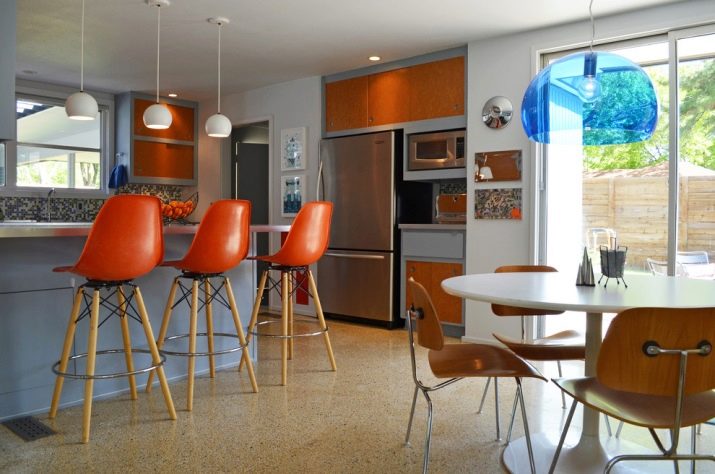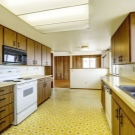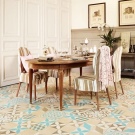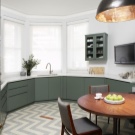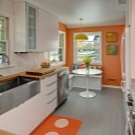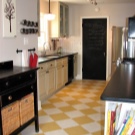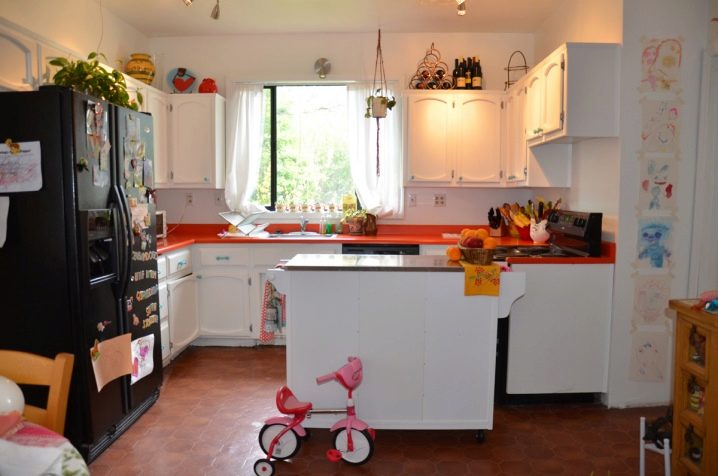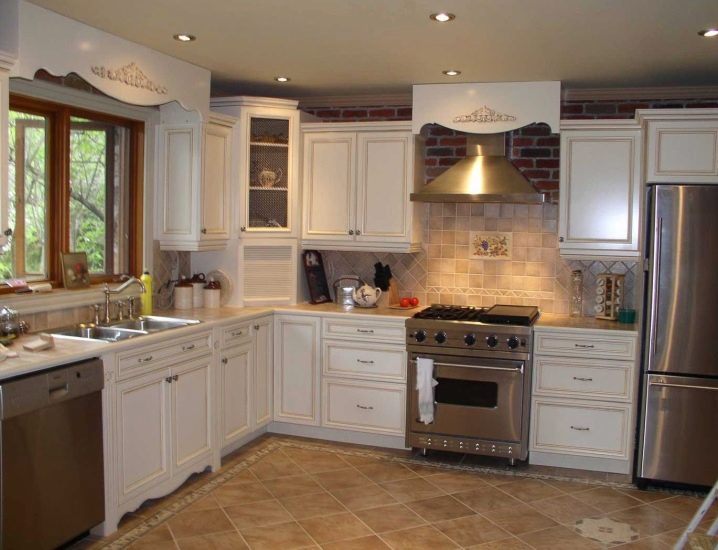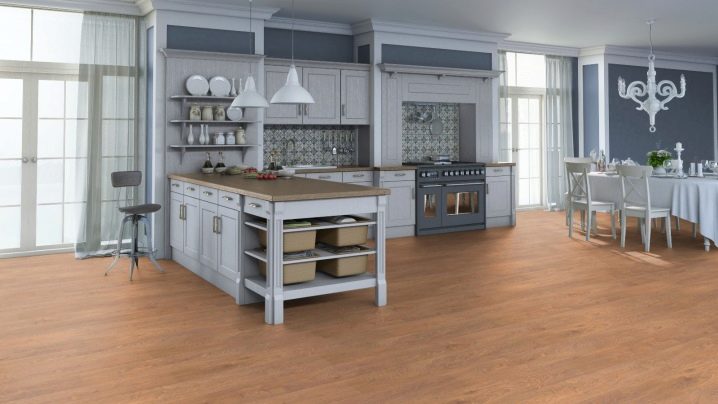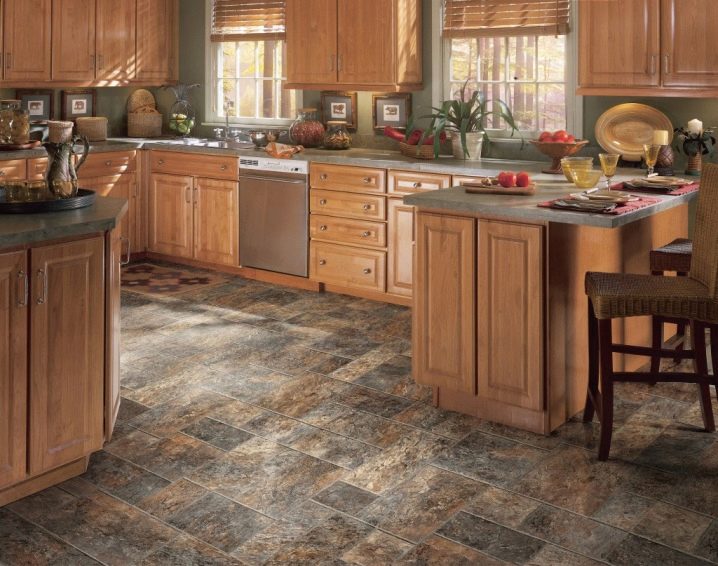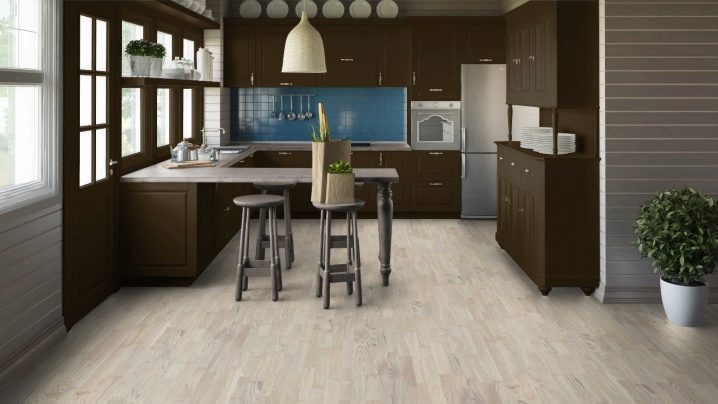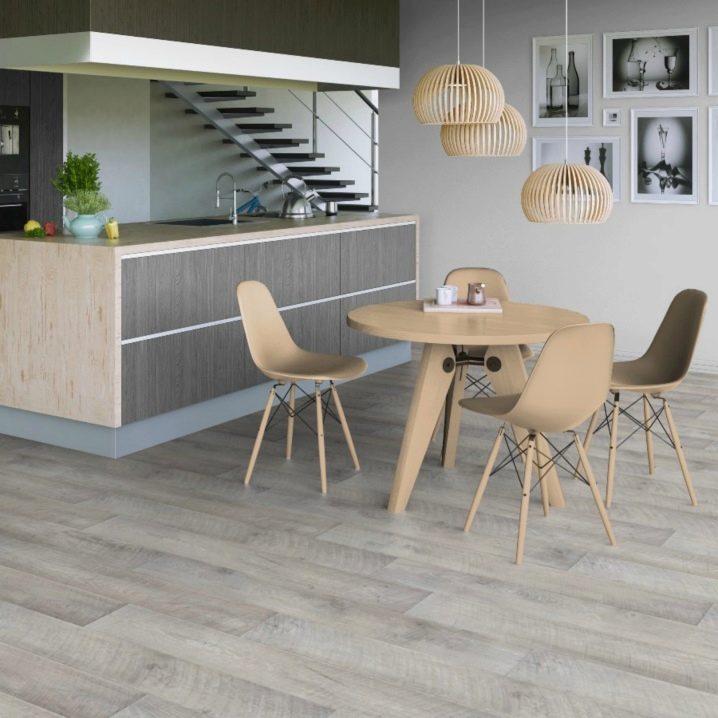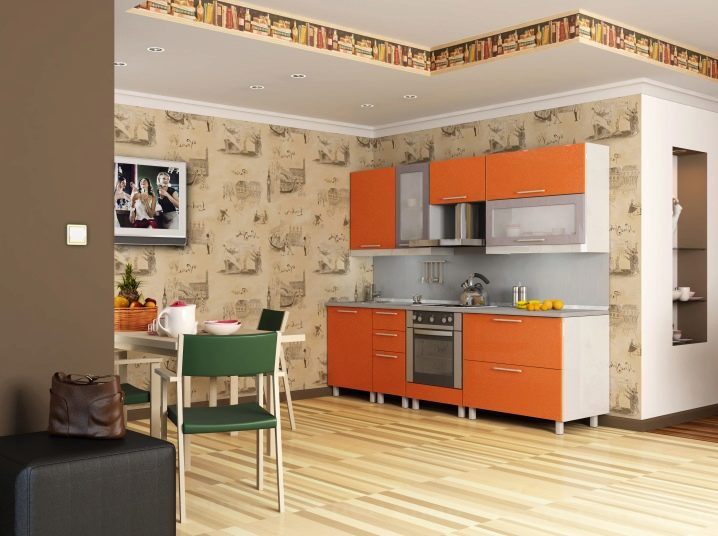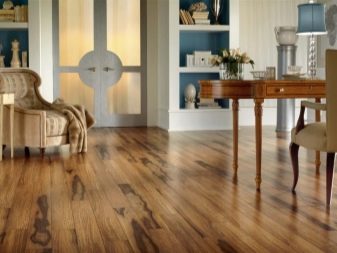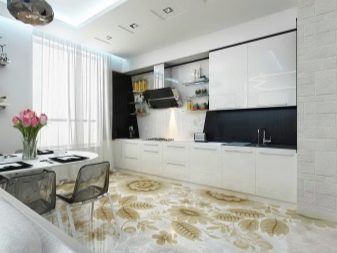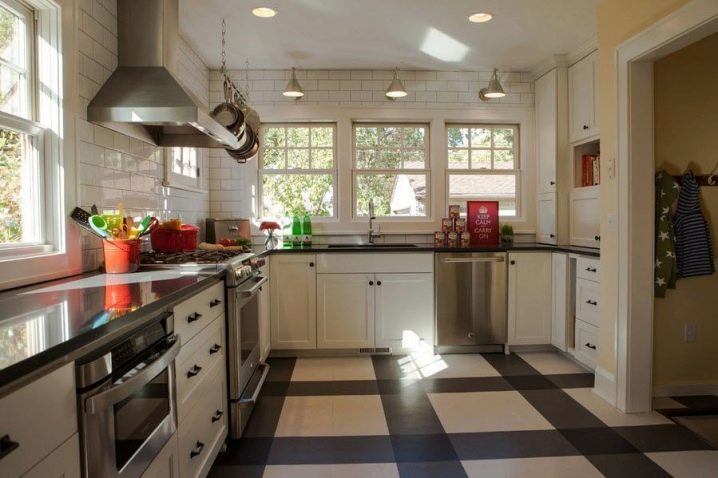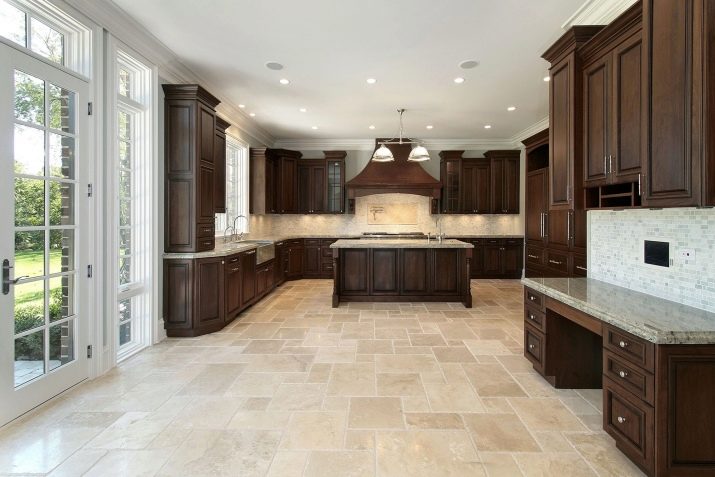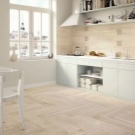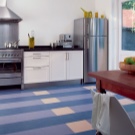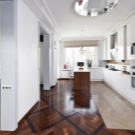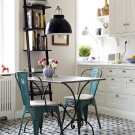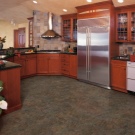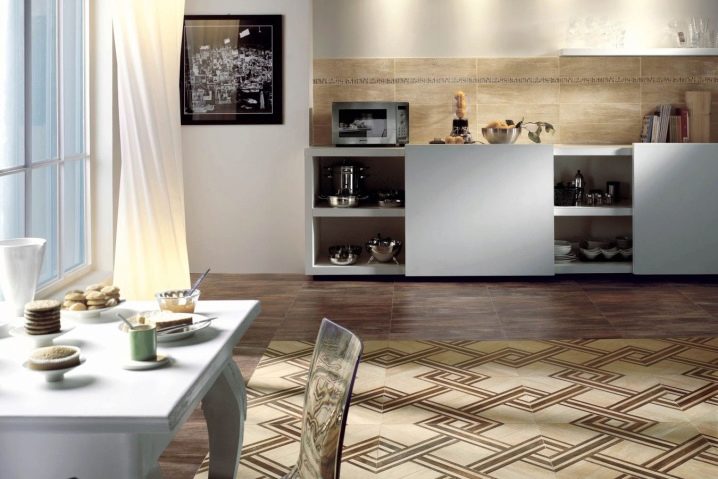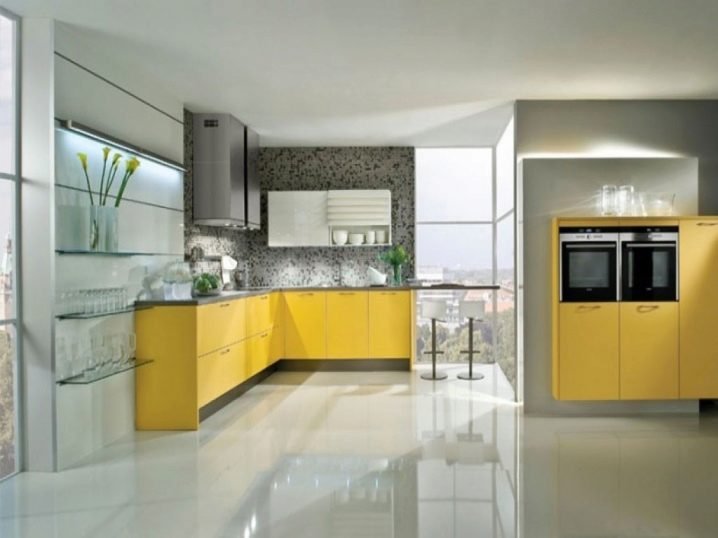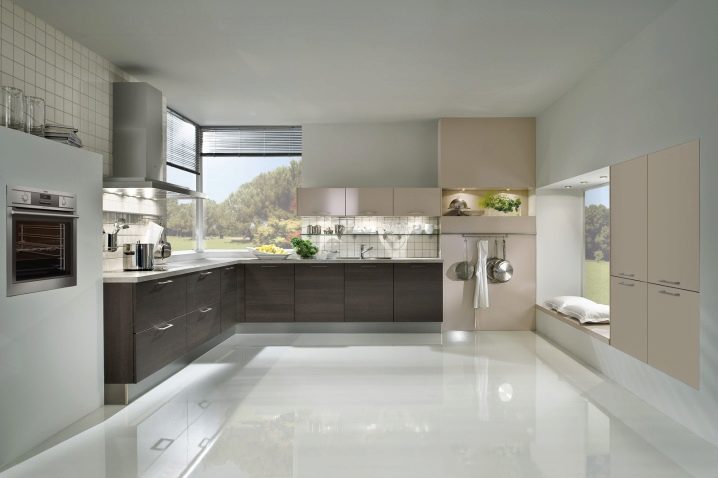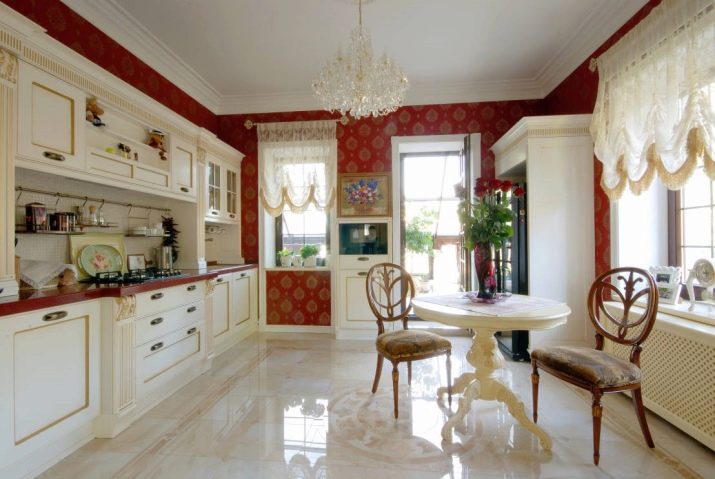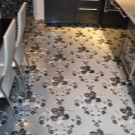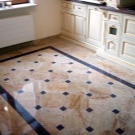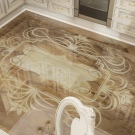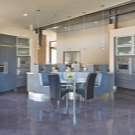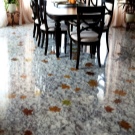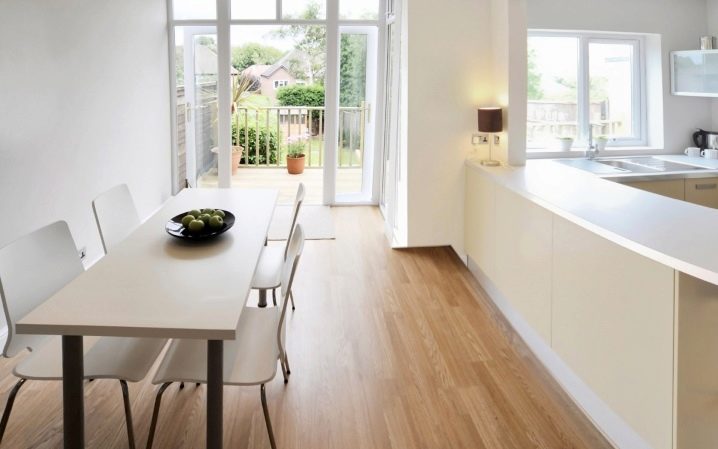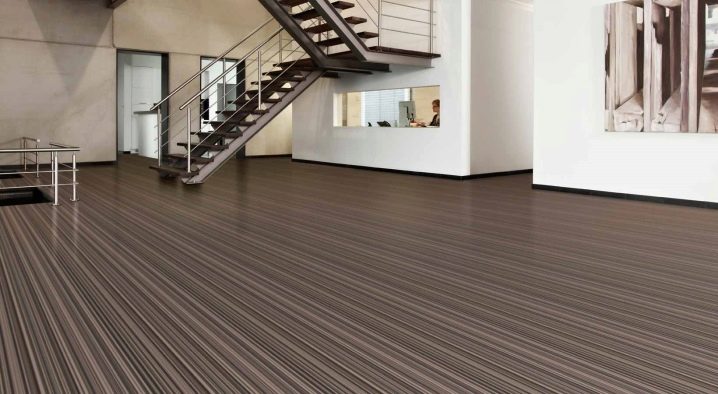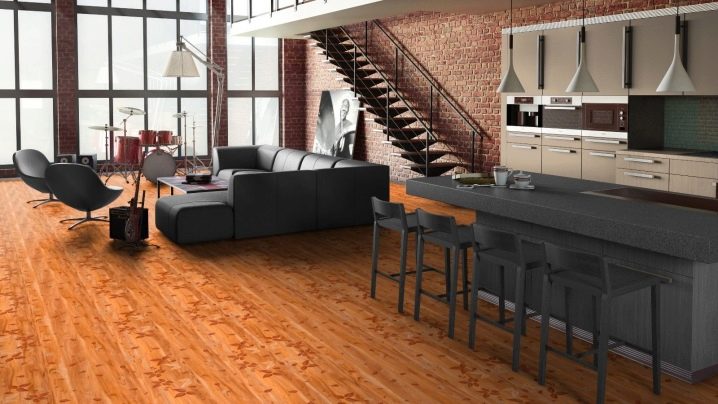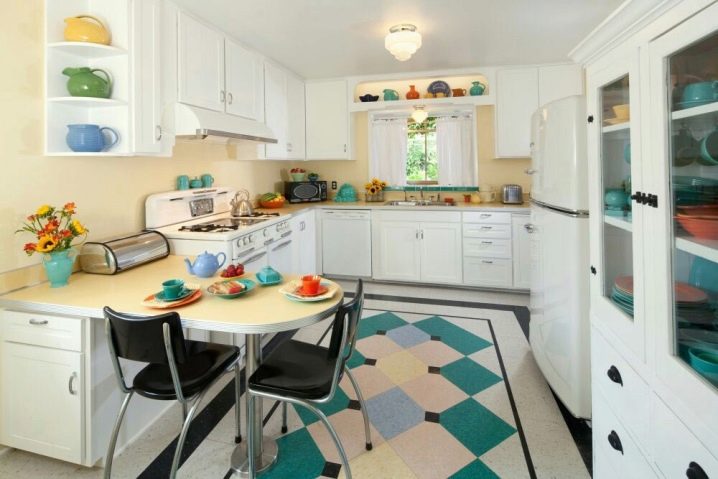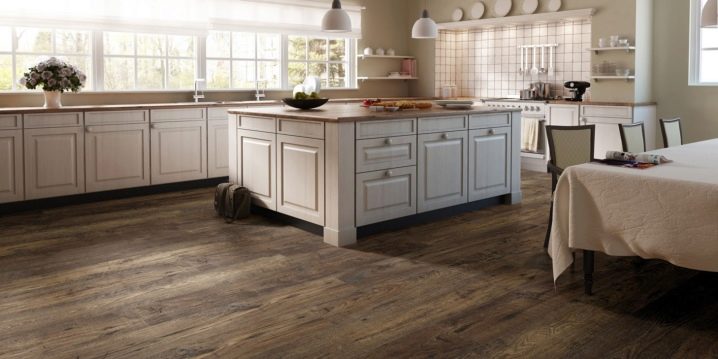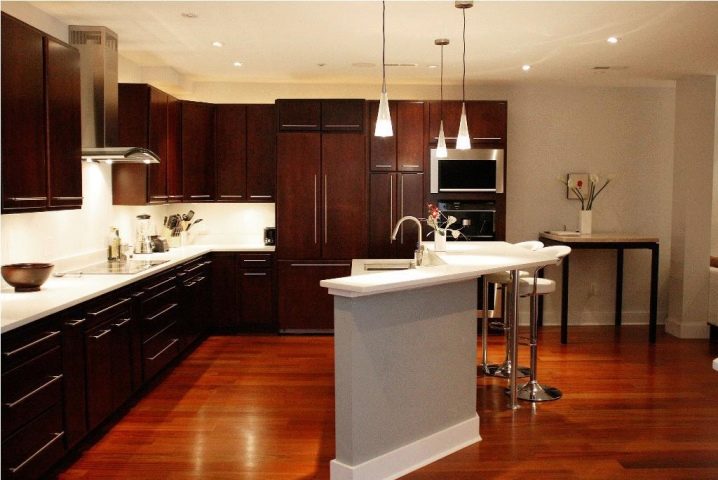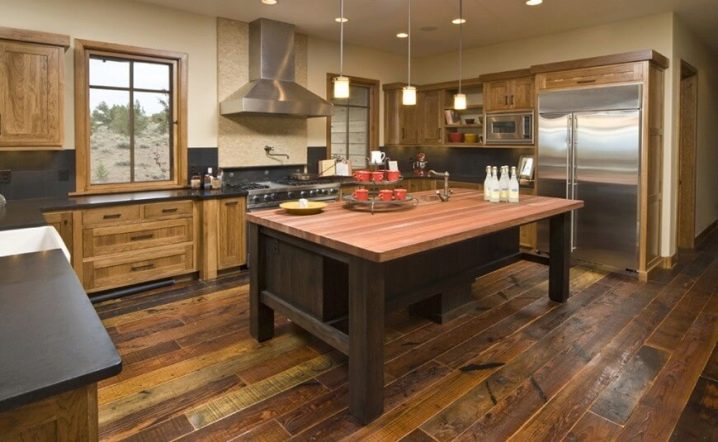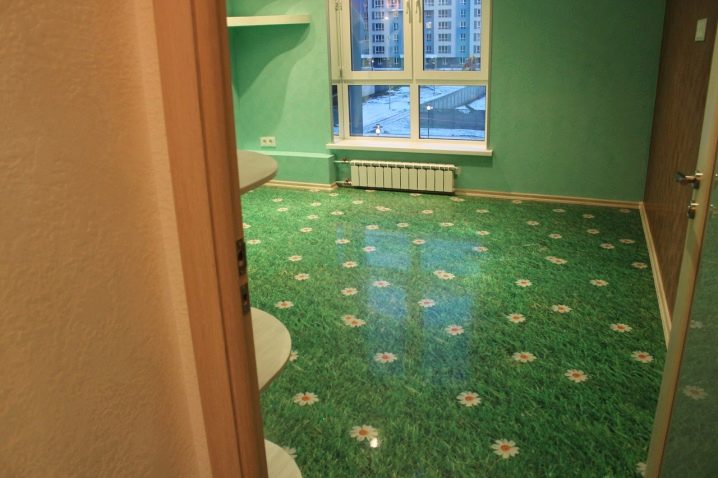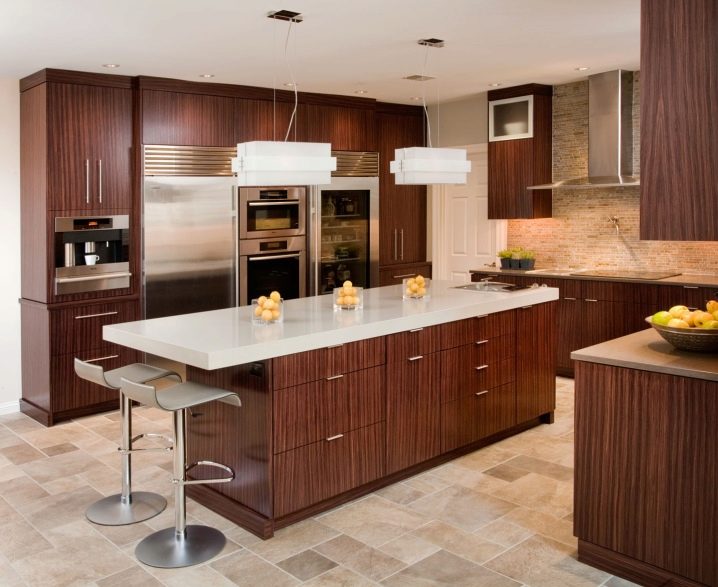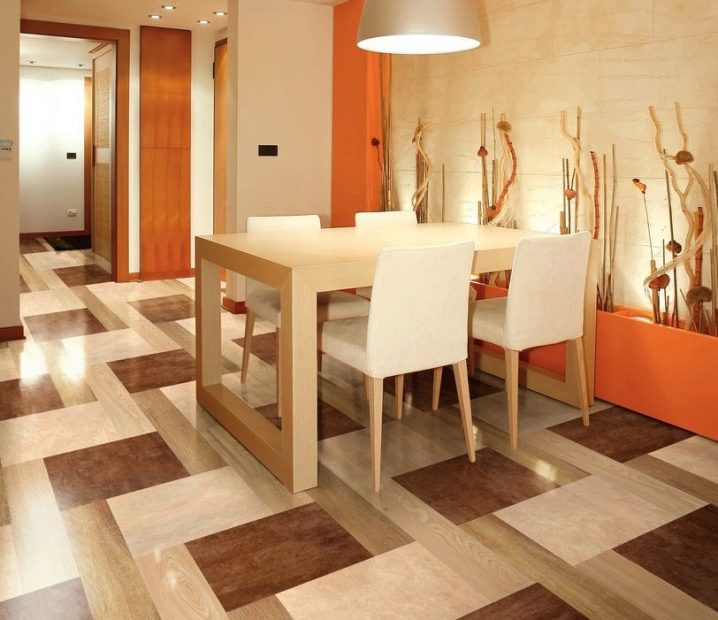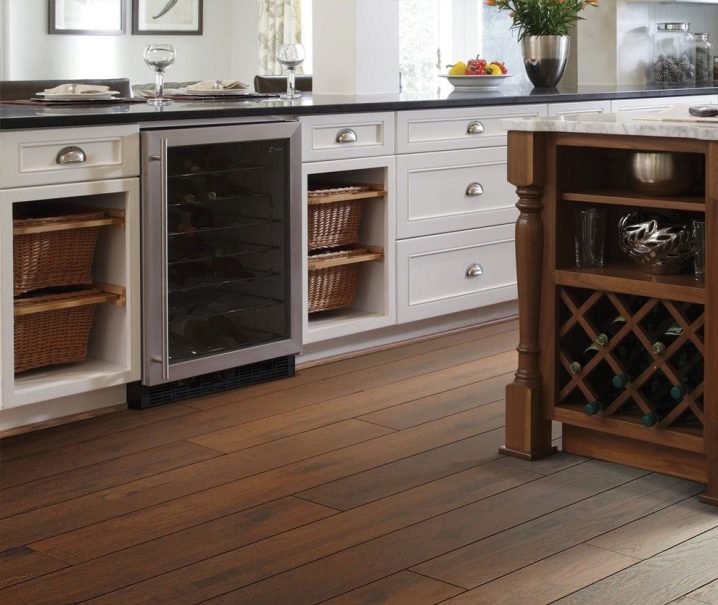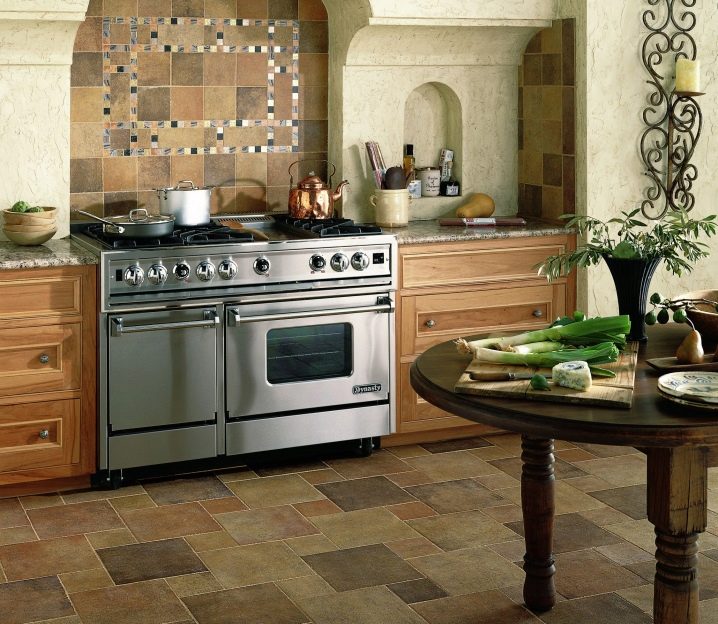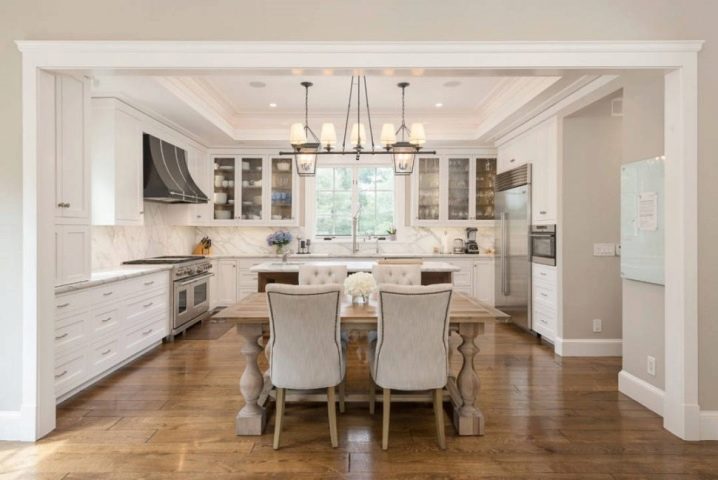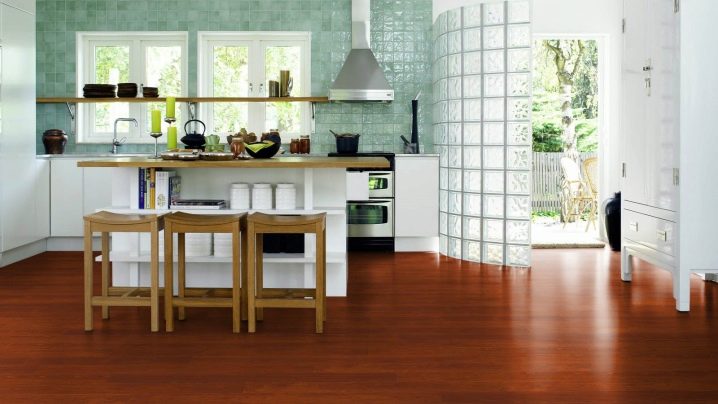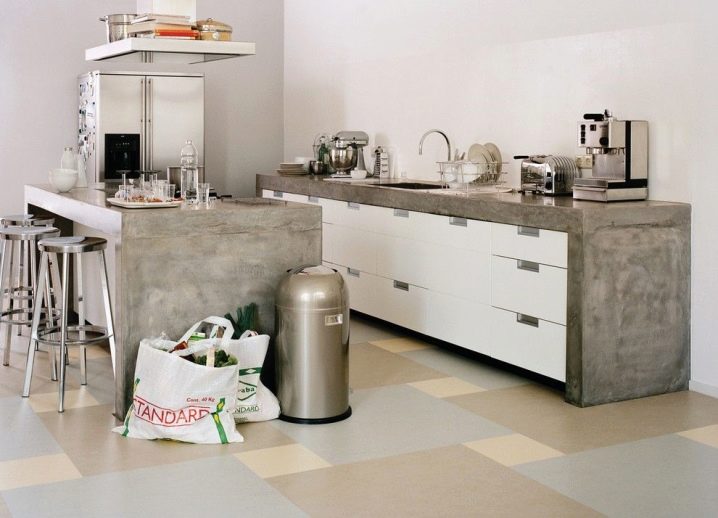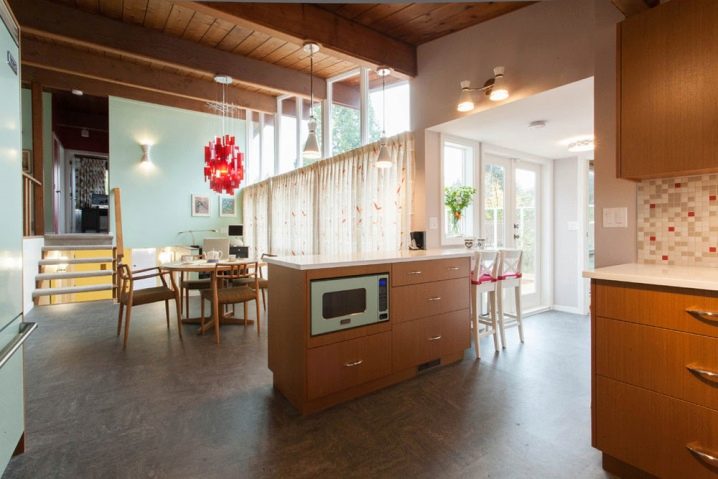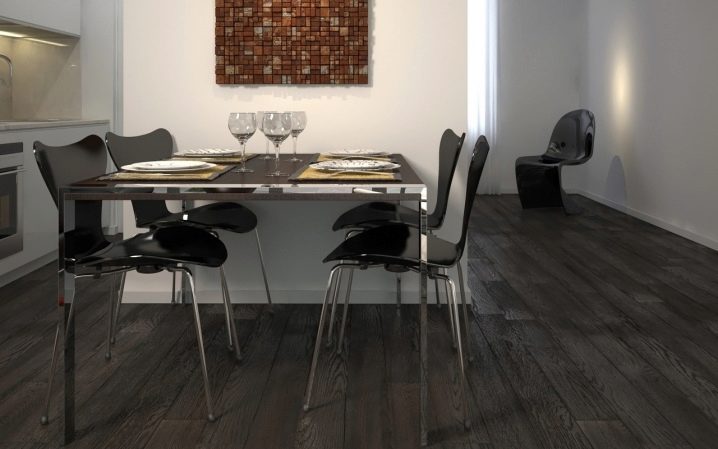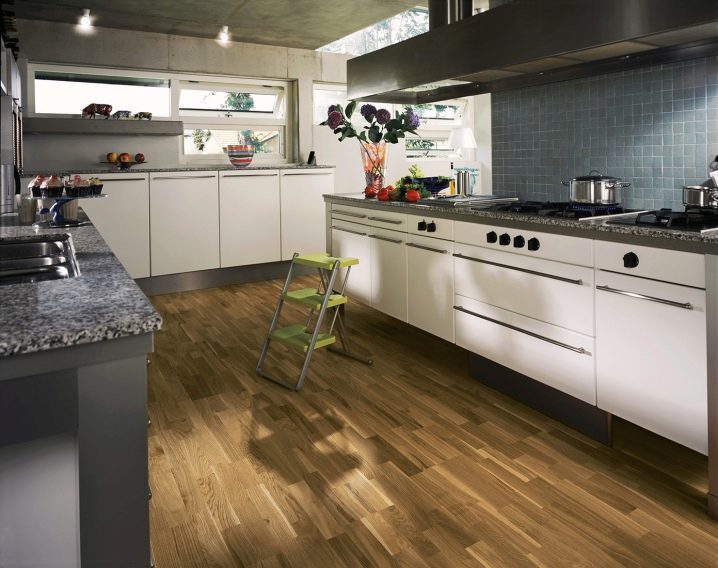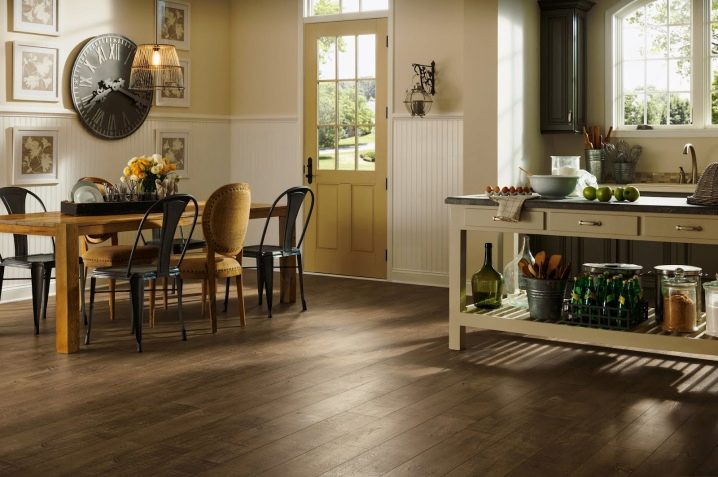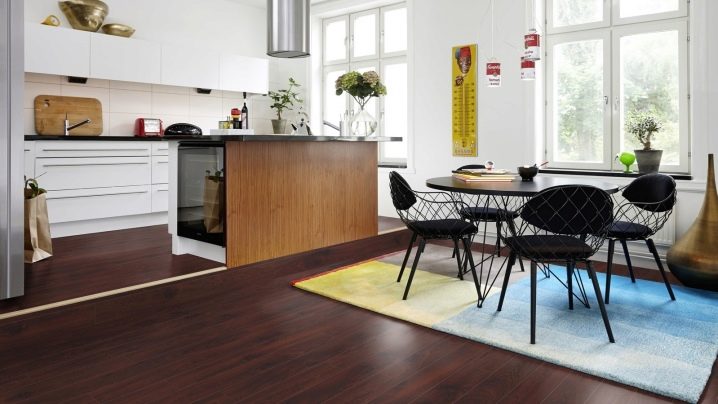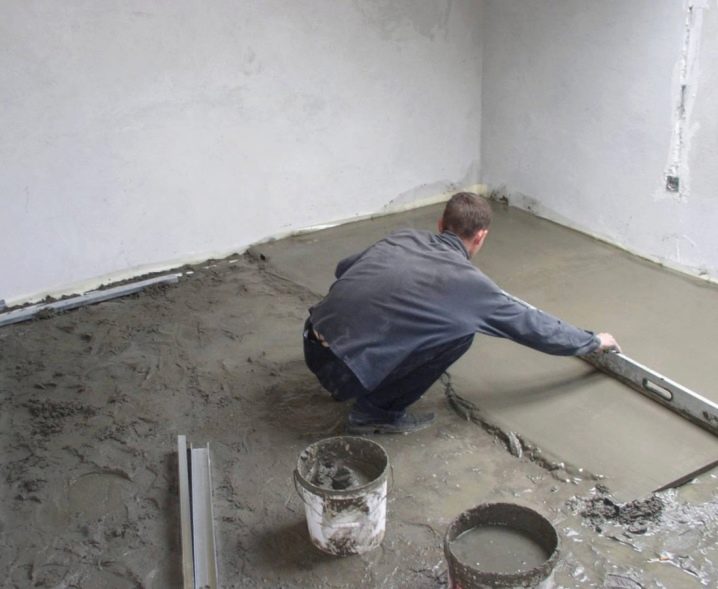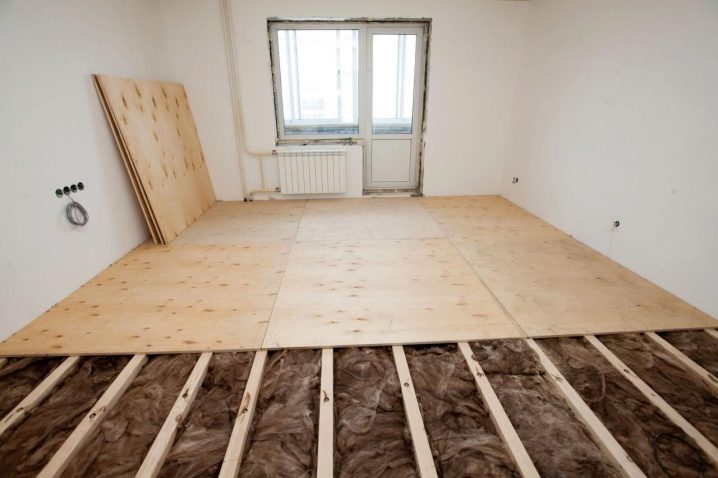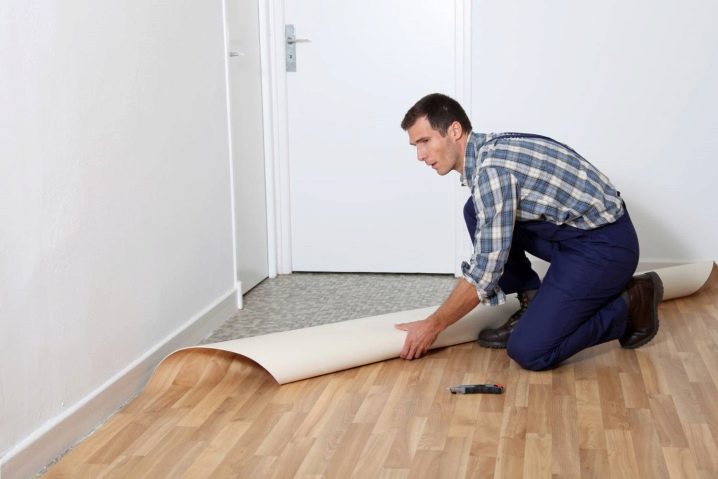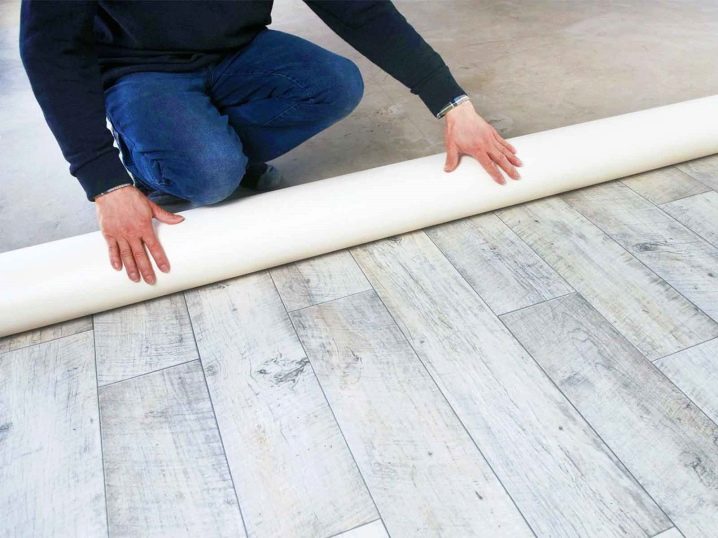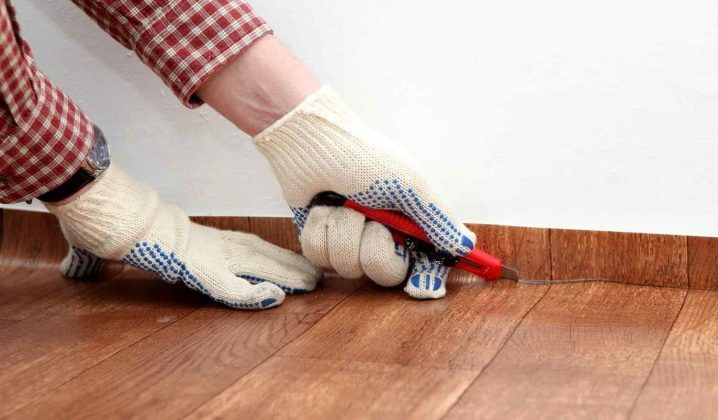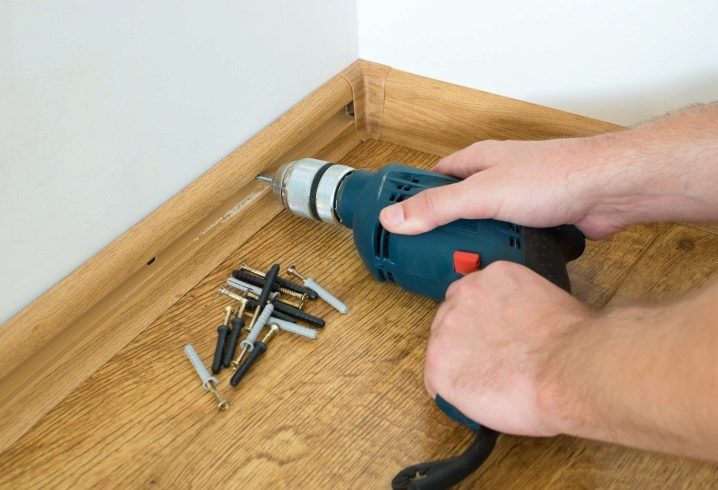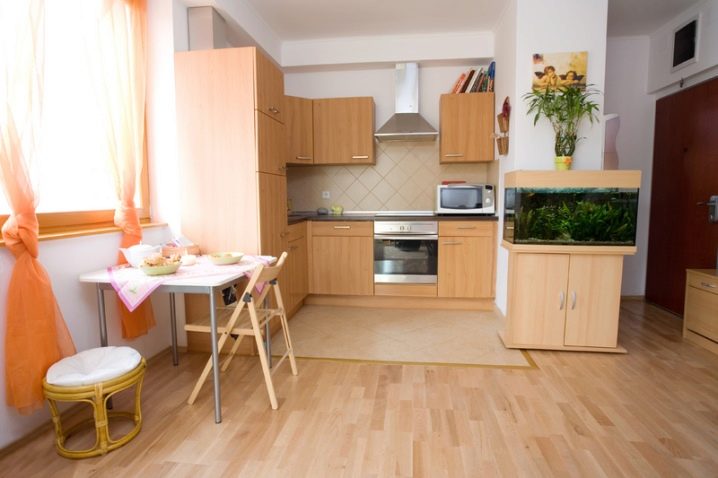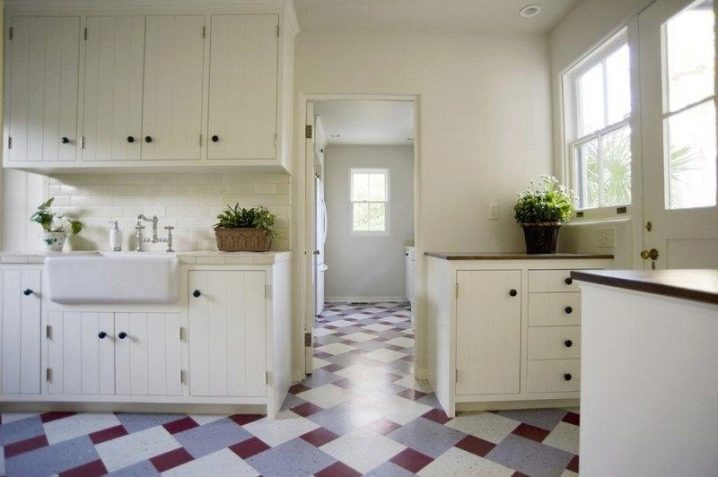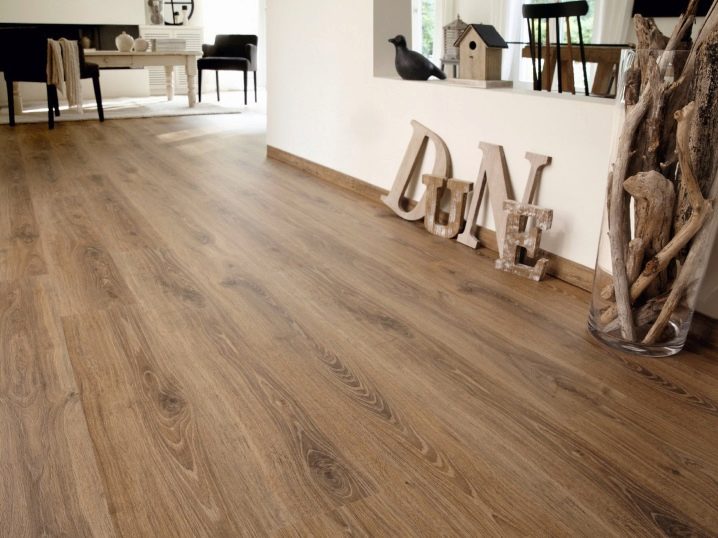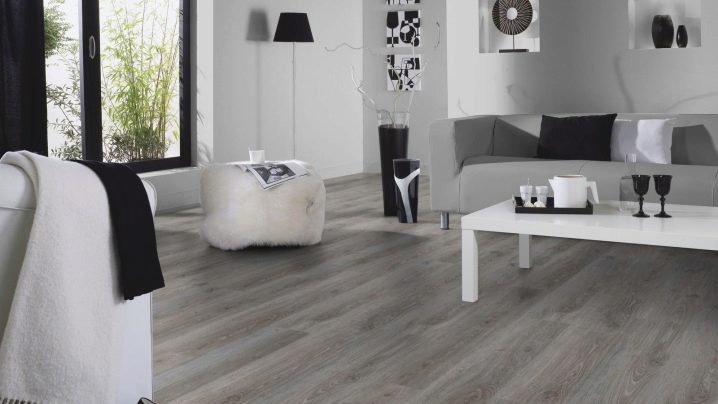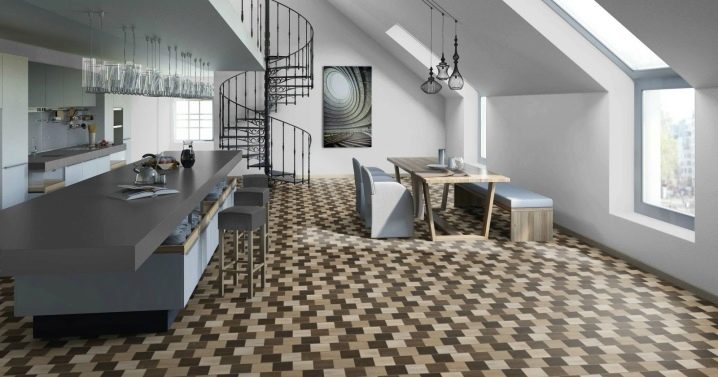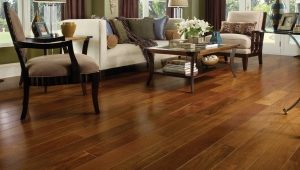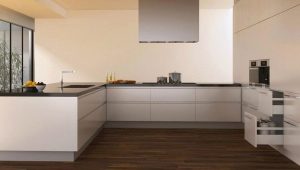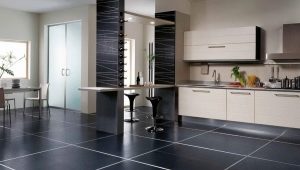Linoleum for the kitchen
Linoleum is one of the most popular flooring options. It is used in kitchens, in the corridors and public places, because it combines a huge amount of positive qualities.
Features and benefits
Linoleum is a roll finishing manufactory created in Great Britain in the 19th century. It has several layers - backing, fiberglass, decorative layer and protective transparent. The strength of linoleum depends on how well each layer is made. Having multiple layers is called heterogeneous.
At the expense of the substrate is ensured sound and thermal insulation. Fiberglass makes the surface smooth or rough - depending on what you need. On the decorative layer there are drawings and colors, well, and the transparent layer is the protector.
Linoleum in a single layer is called homogeneous. It is homogeneous in structure and thickness.
Materials
The material plays almost the most important role - after all, the density and wear resistance of the coating depend on it. It is necessary to look at all the materials and choose the one that is suitable for the kitchen.
As a rule, linoleum is traditionally divided into two types - natural and synthetic, and they are additionally subdivided into several types directly by material.
Natural Linoleum consists of powders of lime or cork conglomerate, oils (most often linseed), resins and coloring pigments - also natural, of course. All this is applied to the base of jute or flax fiber.
Very often it is used for children and kitchens, as it is hypoallergenic.
The main positive characteristics of natural linoleum include:
- Environmental friendliness.
- Resistant to sunlight and many chemicals.
- Wear resistant.
- The operational period is up to forty-five years.
- It does not absorb dirt and grease and cleans well.
- Antiseptic properties, manifested by linseed oil.
But without the minuses here has not done. Usually, natural linoleum is quite expensive - but for such advantages it is well deserved. But if you want to save on kitchen flooring, then you can pay attention to the artificial linoleum. It is made of PVC, alkyd (glyph), rubber (Relin) or colloxive.
But not every artificial linoleum will be a good solution for the kitchen. For example, linoleum from kolloksiva is fire hazardous, although very durable. In residential and public buildings, it is even banned. Glyphthalic coating is created on a fabric basis and is quite durable, but, nevertheless, glyphthal is capricious and not resistant to temperature extremes. The rubber covering perfectly will be suitable for folding or sports rooms, is also used in production rooms, garages. It is very stable, but for the kitchen, as a rule, all its positive features are simply not needed. In homes Relin is banned due to toxic fumes.
The indisputable winner among artificial is considered linoleum from PVC (polyvinyl chloride). It is hypoallergenic and safe. Moisture resistant, durable and elastic, PVC linoleum is resistant to chemicals - acids and alkalis (bases). Also to the pluses can be attributed a huge number of colors and patterns. Resistant to mechanical stress.
Of course, artificial linoleum cannot boast of wear resistance - only up to fifteen years. Yes, in comparison with the natural - it is less than three times, but so not bad.Especially in comparison with other types of coatings.
But he sits down easily and is exposed to the negative effects of high temperatures. However, it is easy to clean, waterproof and hygroscopic. And, importantly, it is not so expensive.
How to choose
Selecting the floor covering in the kitchen, you should pay attention to such characteristics as:
Resistant to water. After all, the floor will be subjected to wet cleaning each time with the addition of chemical detergents. Therefore, if the owner does not plan to change the floor every six months, it is necessary to pay attention to this factor.
And also - for resistance to abrasion. The load on the floor because of the furniture, its movement and people is great, so it is better to choose sustainable linoleum. Thickness plays a key role here, and from the firms it is better to look at the linoleum from Tarkett.
The same applies to resistance to various organisms.
An important factor will be hygroscopicity.
It should also not slide. Even when wet.
It’s not so easy to find the floor covering for kitchen design. For example, for a green or orange kitchen it is better to choose linoleum of muted tones in order to slightly reduce the brightness, and for a narrow kitchen it will have to be cut,so that there are no ugly and impractical seams.
Kinds
Linoleum - this rolls, and soft boards, and liquid linoleum.
Most often it comes in rolls, a maximum of five meters long. This is a classic and familiar look to everyone, but, however, we should not forget about others. For example, about tiled linoleum.
It is available in tiles and narrow panels. This form of release makes it easy to simulate even laminate, even tile, even parquet or even masonry. Patterns and colors are varied, and the only difficulty with its laying is to make the correct markings of the floor, so that during laying you follow the lines already marked.
Among the shortcomings can be identified seams that appear during installation. In this case, under the tile will get dirt, moisture, and delamination may occur. Of the huge advantages - the possibility of partial replacement. It will not be necessary to dismantle the entire coating due to damaged parts.
A very interesting option would be liquid linoleum. Its main advantage is the absence of seams, and that is, a smooth surface. If you want to change the design of the entire room, you will not need to dismantle the entire floor - you can put any covering on top of it.
The composition of the liquid linoleum includes polyurethane and epoxy resins, past high-quality processing. It is kneaded from the base of resin and hardener immediately before laying.
As a result, the owners will receive a waterproof and non-perishable chemical coating. The design can be completely different - from a monochromatic coating to various patterns.
Application Classification
When choosing a floor covering in the kitchen, it is also worth knowing which linoleum is used where - in order not to choose the wrong one.
Commercial (Industrial)
The most durable of all - for residential premises, too much. It is rarely used in homes as useless.
Semi-commercial - for office and retail space
Slightly less wear-resistant, aimed at high traffic intensity. It is also not used for residential premises - the price is too high, and no one will need extraordinary properties. Separate types of semi-commercial linoleum are used at stations and the subway.
Domestic
The name speaks for itself. Often (constantly) creeps in residential areas and offices with low traffic, the best option for the kitchen.It can be both natural and artificial coating.
Color solutions
When choosing linoleum should be remembered some basic points in the design. Light colors, for example, visually increase the space, which is important for small rooms. The same applies to the coating with a small pattern. Light linoleum is ideal for kitchens of Khrushchev or just small kitchens with a small cross-country capacity - after all, it is a little harder to wash it.
Bright contrasts with the walls invigorate - for example, you can cover the floor with chocolate and the walls with white. The main thing in this moment, do not overdo it with brightness - yellow, red and green in abundance put pressure on the psyche. The colors should not be too monotonous either - the kitchen, completely made in one color, quickly bothers the eye and ceases to please. The same applies to linoleum.
Here are some tips from designers that may help you decide on the style of flooring:
Keep a balance. If the walls are dark, the floor should be a little lighter, the richer the wallpaper - the softer the shade of linoleum.
Canvases “under the tree” look very natural, stylish and beautiful.They are universal and suitable for any design without exception.
Linoleum with pictures of the cosmos, sky, grass - natural patterns looks very unusual. It can be combined with similar wallpaper, and with solid walls.
Do not choose furniture of the same shade as the floor. It creates the feeling that it grows right from under the floor. The same applies to curtains - in general, all items that have a direct connection with the floor.
Interesting solutions in interior design
Linoleum is distinguished by a huge number of designs and colors. However, just buying a beautiful and stylish linoleum is not enough. It is also necessary to properly “arrange” the pieces of furniture in the kitchen and in general create the right atmosphere.
It will be very interesting to look linoleum in a geometric style. Especially - in the kitchen of minimalism or high-tech. A coating under the tile has been relevant for many decades for its authenticity and unobtrusiveness. Looks equally good with long dining tables, and with small neat curbstones.
Special nobility, along with simplicity, will help to achieve linoleum under the tree or under the floor.This coating mimics the natural pattern of a tree or mosaic on it. Looks great both with metal interior details, and with the same “ala naturel”.
In addition to wood, there is also an imitation of stone - marble, granite. This style should be taken with caution - because the stones can look completely non-artificial - due to the lack of relief or simply a crooked pattern. There is also a masonry option. In general, the coating under the stone is not recommended to mix with wooden - natural textures with each other can look wildly.
What is better: laminate or linoleum
As a rule, high-quality linoleum and laminate are about the same, so very often customers have the question - what to choose? In this issue you need to understand better.
It is worth knowing that the laminate is completely artificial coating, and it is not entirely correct to compare it with natural linoleum. Most often, if a similar question arises, then we are also talking about a synthetic form.
Linoleum, unlike laminate, does not require additional protective coating. Both of them can imitate various coatings - wood, porcelain stoneware, granite, stone, and so on, and have sufficient moisture resistance.
Thus, it can be understood that the advantages of these two coatings are quite the same. But the laminate has a number of disadvantages, dramatically reducing its popularity:
Non-natural laminate. And yes, if you compare it with artificial linoleum, this is not a minus at all. But there is also a natural one.
Short-lived. In wet areas, despite its moisture resistance, can last a maximum of five years against fifteen linoleum. And if you accidentally fill the laminate with water completely, then you will have to change it. The whole.
Laminate is not shock resistant. If a sharp object falls on its surface, then bald spots or even holes cannot be avoided.
The conclusion suggests itself - laminate at least slightly, but inferior to linoleum. They both do not fade, easy to install and resistant, but, unfortunately, the laminate has more disadvantages.
Preparation for laying
Choose linoleum - still half the battle. We still need to lay it. How to put linoleum correctly is a difficult question, but quite solvable. First of all, before buying linoleum, you need to calculate the size of the room.
Before laying linoleum it is necessary to level the floor. Especially when it comes to the concrete surface.Repair solution needs to be repaired with all the cracks, cracks, to align the projections - in other words, to make the floor surface perfectly smooth. After that, with the help of a vacuum cleaner, all small garbage should be removed. The final touch, when it comes to concrete, is the primer penetrating compound. This is done to minimize squeaks and dust.
If we talk about the wooden surface, then the main role is played by strength. All boards should be about equally strong, do not have gaps between them - they should be puttied. The glue may not lie on the painted boards - in this case it is worth washing the old coating with the help of specialized liquids. Heads of nails are better to “tamp” to the floor, and from above walk with a scraper or just putty. Another option is to cover the floor with plywood.
Many are concerned about the question - is it possible to lay a new linoleum on the old? In principle, yes - so the coating will become even warmer and quieter. But, in fact, this is undesirable - in fact, the second layer will repeat all the flaws of the first and will be even more under the furniture and heels, especially in the hallway.
Piling
When the surface of the kitchen floor is fully prepared, you can put linoleum. The main thing is that the temperature should not be lower than 15 degrees Celsius and not higher than 30, also high humidity is undesirable. Now you can go to the most crucial stage - directly laying. Just put linoleum is not particularly difficult - but it is necessary that he lay for two or three days. After this comes the stage of trimming and fitting linoleum. As a rule, this stage causes the greatest difficulties - both for beginners and pros.
The main principle is to leave ten millimeters of stock near the wall itself, highlighting the markers. If you do a little more - there will be an ugly gap, a little more - waves. Cut with a sharp construction knife.
There is another way - laying using skirting boards. This is the fastest and easiest option. Baseboards should be plastic and flexible, fastened to the wall. However, if the cover is laid unevenly - then the waves will be completely impossible to remove without a complete lifting of the linoleum.
Some prefer to lay linoleum on double-sided tape. In this case, the adhesive tape is attached to the surface in advance, without peeling off until the protective film until the moment of direct installation.This method is good because, in addition to fixing at the joints of the walls, you can add a few additional bands in the middle.
Care
Linoleum in the kitchen is polluted faster than in any other room, because the concentration of fat, dirt and dust is much higher. If you do not care for its surface, the floor will very soon lose its luster, the pattern will be erased, the canvas will be exhausted.
Prevention of "diseases" of linoleum is the imposition on it immediately after laying the protective layer, and after - polishing. The protective layer increases the life of the floor covering, repels dirt. The procedure should be carried out twice a year.
How to wash off the fat and clean? Here at least the usual baking soda and detergent will do. Knead the solution by adding each “ingredient” in a tablespoon, cover with water and rub the brush in the solution on the surface. For shine, another recipe is interesting - vinegar diluted with water. This tool should simply clean the floor.
Reviews
Of course, advertising and informational articles are a very important stage when choosing a product. But few people know about such trifles as reviews of real buyers. You can study every review about every kindBut you can read a generalized opinion of buyers in general. This chip works with linoleum.
First of all, people celebrate Tarkett linoleum. Buyers note the density and durability of the floor covering (including the claws of domestic animals, heels and table legs), almost imperceptible odor after directly laying and the proposed instructions.
It is worth saying that, of course, this company has a huge number of lines - but all customers respond approximately equally positively. However, this does not mean that Tarkett is the only linoleum that you need to buy.
